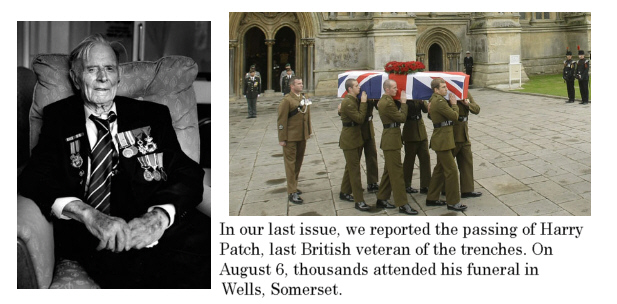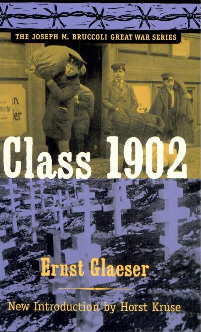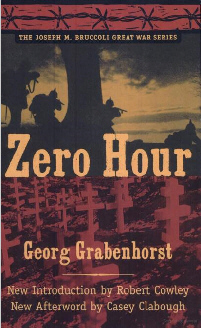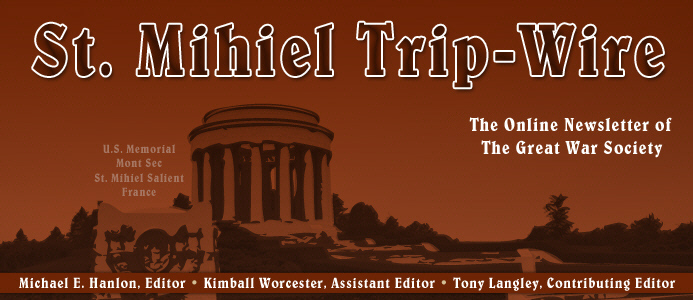

TRENCH REPORT: As announced in last month's issue, I will be traveling for most of September, so this issue of the Trip-Wire will have to cover two months. The next issue will be online November 1, and it will be both our anniversary issue and our annual celebration of Armistice Veterans Remembrance Day. . .One bit of Travel News: My parent company, Valor Tours, has just announced an August 2011 trip to the Italian Front, which I will lead. It will include stops in the Trentino, Rovereto, Cortina, Caporetto, the Piave sector, Gorizia and two days in Venice. Please send me an email if you would like to be on our mailing list for this exciting trip. (email) MH
This Month's Internet Feature
YouTube and the Great War
Original Film Footage
Film with WWI Musical Sound Track
First World War: A Tribute to the Participants
Battle of the Somme
WWI Aviation Footage
Funeral of the Red Baron
Present Day Visit to the Battlefields
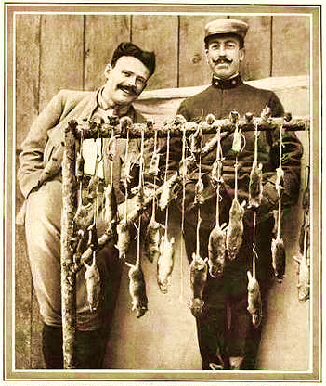 Back by Popular Demand
from Our Rat Catchers Series
New at Our Own & Our Friends' Great War Websites
Click on Title or Icon to Access
|
Recommended by new reader Harry Fecitt:
The Soldier's Burden
One of the best new WWI sites I've seen lately featuring all the big issues, plus forgotten areas like the battles in colonial regions and much on the German side of things.
From long-term Trip-Wire subscriber Martin-Robert Galle of Germany:
Omaha-Beach.org
Martin's grandfather, Oberst (Colonel) Ernst Goth commanded the German troops defending Omaha Beach on D-Day and as a young lieutenant faced the Yanks on the Western Front in WWI. His site has a bonanza of photos and information on both World Wars.
At Great War Society Sites
A new focus for The Great War Society is on the shapers of the 20th Century who had formative experience in 1914-1918. See if you can solve the Society's veterans puzzle.
At the WFA-USA
|

The leading German delegate at Compiègne during the Armistice negotiations, Matthias Erzberger, who had been an early peace advocate, was assassinated in 1921. The responsible group was an assassination squad offshoot of the Freikorps movement known as Organisation Consul. They also murdered Germany's wartime financial leader Walter Rathenau in 1922.
|
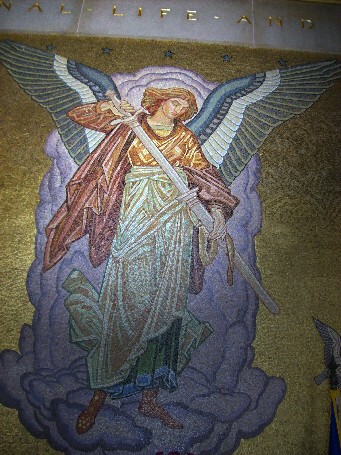
St. Michael Mosaic
Memorial Chapel, U.S. St. Mihiel Cemetery
|
GREAT WAR 2009 EVENT CALENDAR
|
Western Front U.S.A. &
The Great War Society
Combined 2009 Annual Seminar,
September 11 - 13, 2009
National World War I Museum
Kansas City, Missouri
The and compelling theme for the seminar combines the original seminar ideas for both organizations: "Technology, Treaties and the War: From 'Tin Hats' to Tanks and 'Top Hats' to Territories." Registration forms, fees and further information will be forthcoming. Check back here or at the organizations' Websites for details. (link)
|
Back to the Cradle
League of WWI Aviation Historians
Biennial Seminar,
October 16 - 17, 2009
Double Tree Hotel at the Airport
San Antonio, Texas
Downloadble pdf document with details: (link)
|
Western Front Association
U.S. Branch Chapter Meetings
Check for Your Region
Regularly Updated (details)
|
Great War Society Monthly Chapter Meetings
Berkeley, San Francisco and Palo Alto, CA
Regularly Updated (details)
|
Upcoming Events at the National World War I Museum
Kansas City, Missouri
Regularly Updated (details)
|
Send additions/corrections:
Email Response
|
There is a new online newsletter from the Commonwealth War Graves Commission. Register here:
(link)
Reader and author Tom Phelan is off to Ireland again. He will be presenting "Forgotten Heroes: Ireland's WWI Soldiers" at the Clones Library, Clones, Co. Monaghan, Monday, October 19, 2009.
Late Breaking Announcement: Two old friends of the World War I community, Frank Jordan and Tom Gudmestad, have just announced that they are planning to lead their own tour of the Western Front plus Normandy next April 2-11. Download their flyer if you are interested: (Word Document)
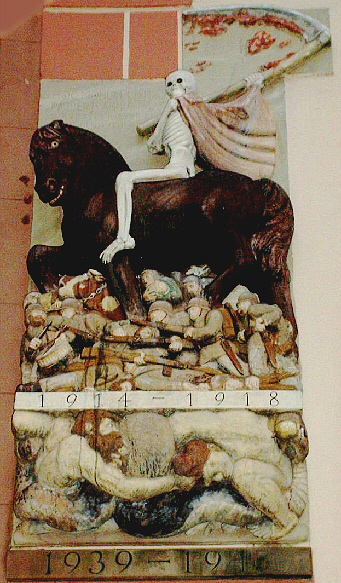
World Wars Memorial
Karlsruhe, Germany
(Can someone explain the WWII symbolism?)

All we know is that, at times, fighting the Russians, we had to remove the piles of enemy bodies from before our trenches, so as to get a clear field of fire against new waves of assault.
Field Marshal Paul von Hindenburg
|
|
|
|
|
Page Two
|
|
|
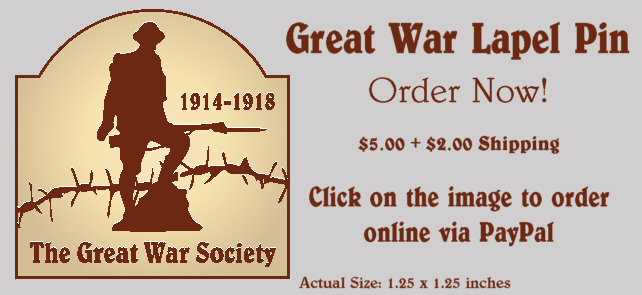 |
| The Compiègne Armistice Glade |
A must stop for visitors to the Western Front is the Armistice Glade at Compiègne north of Paris where both the Armistice of November 11, 1918 and the French surrender of 1940 were signed. There are several notable monuments on the site and the museum is quite good, with an outstanding collection of stereoscopic viewers for three-dimensional war images.

The site for the November 1918 Armistice negotiations in the forest of Rethondes on the outskirts of Compiègne was an artillery railway emplacement. It was hidden and out of the way but accessible for both delegations. Marshal Foch's train is shown on the left, the German delegation's to the right.
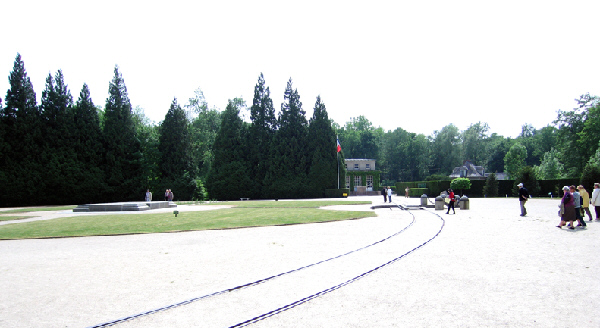
The central area today from approximately the same perspective (slightly shifted right). The enclosure holding a replica of Foch's car and the museum is in the distance. The large block in the left foreground bears the inscription (in French): "Here on 11 November 1918 the criminal pride of the German Empire was brought low, vanquished by the free peoples whom it had sought to enslave."
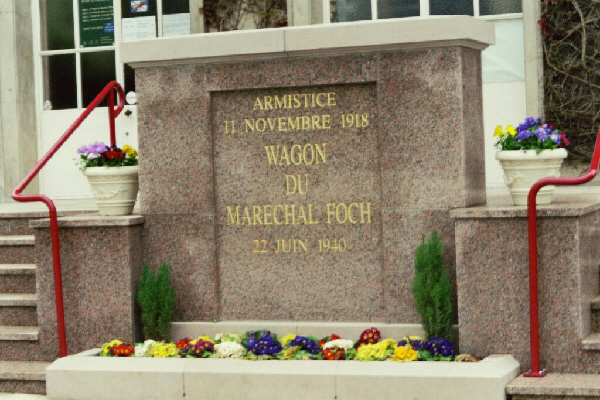
Entrance to the rail car and museum. (It's closed Tuesdays, by the way.)
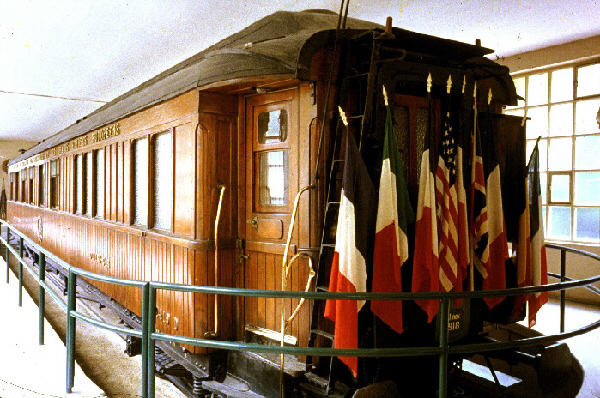
Foch's Carriage. The original at the orders of Hitler was moved back to the November 11, 1918 location and used as the venue for executing the French surrender. The car was then moved back to Germany and destroyed at the end of World War II. The present car is considered a very accurate replica of the original.
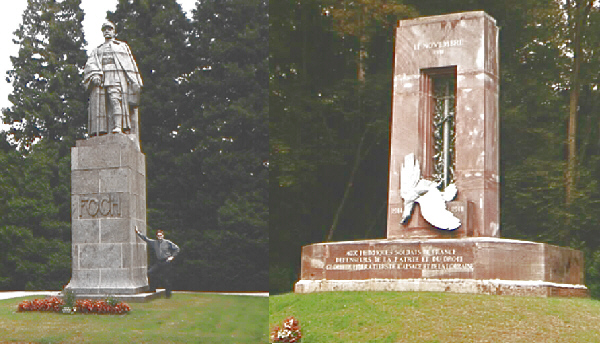
Two of the notable statues at the Glade: The Foch statue was unveiled in 1937 with the good Marshal in attendance; the slain German eagle is the principal feature to the monument commemorating the return of Alsace and Lorraine that was built by public subscription after the war.
|
|
World War I Headlines
in the
21st Century
|
|

From a Neutral Nation's Periodical
|

1914 Infantry Uniforms Depicted in Spanish Magazine La Isfera
|
Click Here to Visit the Website of Our Contributing Editor Tony Langley
War in a Different Light
|
|
Subscribe to Our Online Magazine
|
|

|
|
|
Page Three
|
|
|
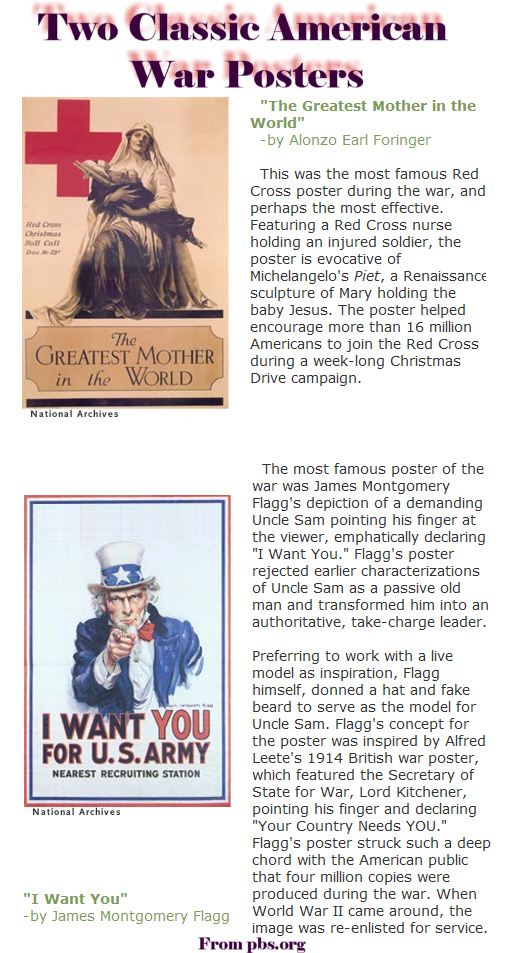
|
 |
Three from the Bruccoli Collection
Reviewed by Len Shurtleff of
Len's Bookshelf (link)
|
The Joseph M. Bruccoli Collection at the Universities of South Carolina and Virginia was amassed by his son, the late Professor Matthew J. Bruccoli, Jefferies Professor of English at University of South Carolina. The senior Bruccoli, for whom the collection is named, was a wounded veteran of WWI who served in France. The collection contains over 4,000 items including 3,400 print materials such as military training manuals, wartime magazines, trench newspapers, novels, contemporary works of political science and history, novels, poetry, scrapbooks, postcards, memorabilia, recordings, motion pictures, and video. The poetry collection includes rare work by Isaac Rosenberg, as well as English and French editions of Alan Seeger. There are also 500 pieces of contemporary sheet music and some 175 posters from the U.S., England, France, Italy, Poland, Russia, and Austria.
The University of South Carolina is also embarked on publishing a series of classic works of WWI literature from the Bruccoli Collection. Most of these are semi-autobiographical novels written by veterans of the conflict; one is a book of poetry. Our goal is to review all of these distinguished works in the Trip-Wire. In this issue, we present the first three in our series of reviews.
Civilization, 1914-1917, by Georges Duhamel
This is a literary work of international status produced by a French writer of the first rank. Georges Duhamel (1884-1966) was a member of the exalted Academie Française and the author of more than 50 works of fiction, nonfiction, poetry, and plays. Like Clemenceau, Duhamel was also a physician and served during the Great War in mobile hospitals along the front. In the introduction, Dr. Brosman offers a biographical sketch of Duhamel and places his work in the context of the war.
Like most Great War fiction, this work is autobiographical in part. It is not a narrative novel but rather a series of vignettes focusing on characters sketched with uncommon skill and attention to detail. The settings are, unsurprisingly, often field medical stations. His characters encompass ordinary soldiers, priests, officers, and civilians in a variety of settings. His prose illuminates and preserves the struggle of ordinary men to cope with the stresses of mind-numbing industrialized warfare.
Civilization, 1914-1917, Georges Duhamel, University of South Carolina, 2009, 288 + xxi pages, ISBN 978 1 57033 838 9, $21.99 trade paperback. First published in 1918. English translation by E. S. Brooks. Introduction by Catherine Savage Brosman. This work won a Goncourt Prize, France's premier literary award.
Class 1902 by Ernst Glaeser
A study in mass psychology and a plea for pacifism, this novel is the story of a German boy growing up before and during the Great War. The protagonist, born in 1902--thus the title--is too young for the war. The title refers to the conscription class of 1902, which did not become eligible for military service until after the First World War was over.
The narrator, who is only 12 when the story begins, is a keen observer of life in his small town and the various social levels and political tendencies (from socialist to monarchist) represented there. Though he misunderstands much of what he sees, he is nonetheless a perceptive and often insightful observer of the times. In one episode, he meets a famous German academician who explains to him that the coming war would clear the air and give rise to "a new German people...whose victory would save the world from mediocrity, brutalizing materialism, western democracy and false humanism." Instead, as the youth later finds, war brings only death, brutality, and hunger as he is forced to leave school to perform farm labor. His girlfriend is killed in a bombing attack.
Glaeser's novel is obviously intended as a cautionary tale and as an analysis of German society before the overthrow of the Wilhelmine Empire, destroyed by the Great War and by its own hubris. As such, it deserves a place in WWI literature alongside works by Erich Maria Remarque and Arnold Zweig.
Class 1902, Ernst Glaeser, South Carolina, 2008, 326+ xviii pages, ISBN 978 1 57003 712 2, $21.95 paper. Originally published by Gustav Kiepenheuerin German as Jahrgang 1902 in 1928; English edition published by Martin Seeker, 1929.
Zero Hour by Georg Grabenhorst
This novel by a German World War I combat veteran has an entirely different pace and language as compared to that employed by Erich Maria Remarque's All Quiet on the Western Front trilogy. The German title of the novel is Fahnenjunker Volkenborn after its protagonist Hans Volkenborn, an upper middle-class enlisted soldier--actually an officer trainee--in his late teens. As an officer trainee, he has comforts and privileges not offered to his enlisted mates, but this does not prevent his gradual descent into a depression brought on by the rigors of combat and expanding command responsibilities for his platoon.
The battle scenes are powerfully drawn, based as they were on the author's own frontline experiences. So too are the sketches of life behind the lines and on leave in a Germany quickly falling victim to food shortages and social revolution. Indeed, the novel appears to have been written as part of an attempt by the author to emerge from a serous bout of post-traumatic stress disorder: the shell shock experienced by Hans Volkenborn, whose name translates into English as "born of the people."
Zero Hour, Georg Grabenhorst, South Carolina, 2006, 311 + xxiv pages, ISBN 978 1 57003 662 0, $19.95 trade paperback. First published in English translation by Little Brown in 1929.
These works can all be ordered at Amazon.com.
|
|
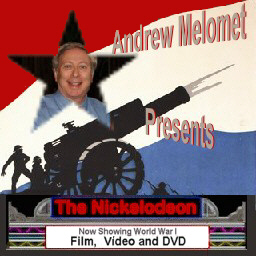 |
From the Archives --
Biggles: Adventures in Time
Reviewed by Andrew Melomet
|
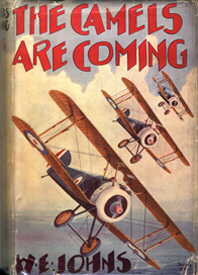
The First Biggles Novel |
The air adventures of Captain James "Biggles" Bigglesworth are well known in the United Kingdom and other countries but much less known here in the States. Written by "Captain" W. E. (William Earl) Johns, the Biggles series consists of 96 books published between 1932 and 1970 with an additional six omnibus editions published within this period, plus two further books published in the late 1990s. Johns was born in 1893 and served in France first as a machine-gunner and from 1918 as a fighter pilot with the Royal Flying Corps. Shot down over Mannheim, he was captured, escaped, caught again, and given a death sentence. Only the sudden end of the war saved his life. Johns remained with the Royal Air Force until 1931 as a flight instructor and later as a recruiting officer. His final rank was Flying Officer. When he became a successful author he promoted himself to Captain. Fans of Monty Python's Flying Circus will recall the parodies "Biggles dictates a letter" and "Cardinal Biggles", complete with flying helmet and goggles, assisting in the interrogations in "The Spanish Inquisition" sketch.
Released theatrically in 1986, Biggles: Adventures in Time was written by Kent Walwin and John Groves and directed by John Hough. Biggles is played by Neil Dickson, and Peter Cushing (in has last film role) played Air Commodore Raymond. Eschewing a plot from any of Johns's own World War I stories, the screenwriters came up with a Biggles science-fiction adventure: Jim Ferguson (Alex Hyde-White), a modern-day executive who finds himself thrown back in time to the Western Front during World War I. Seems that Biggles and Ferguson are "time-twins" who are interlocked across the decades. Biggles's mission is to find and destroy a German secret super weapon that can change the course of the war.
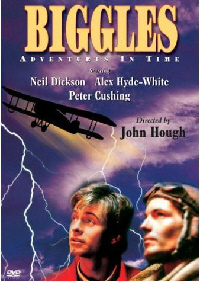
DVD Cover |
Other regulars from the Biggles canon make their appearances. The stalwart lads, Algy, Bertie, and Ginger, are there to lend a hand or grenade when required. The sole love of Biggles' life, Marie, is behind the lines, hiding with the nuns. And there's Von Stalhein, the enemy ace who flies into combat wearing an iron mask. The fantastic story seems more G-8 and His Battle Aces than a true Biggles tale. There's only one dogfight and that's between a Boeing Stearman and a Belgian Stampe SV-4. The airplanes are from the wrong era, but at least they have the correct number of wings. Still, the film has its charms and the World War I battle scenes are created with vigor and explosive enthusiasm. Most of the modern-age scenes were shot in London, on and about the Docklands and Tower Bridge. My favorite line is in the modern era when Biggles flies a helicopter, exclaiming, "If you can fly a Sopwith Camel, you can fly anything!"
The DVD of Biggles: Adventures in Time has been released in the UK and here in the States. The UK DVD has extra features including Trailer, Making of the Film, TV Spots, Image Gallery, Filmographies, Music Video and excerpts from two 1986 TV shows covering the original theatrical release. The film is rated PG for violence and mild swearing. While not a perfect family film, there is a certain pulpish "Boys Own" charm to Biggles and it grows on you with time. It's definitely worth a rental, at least.
Click here to download the 2004-2008 Index for the Nickelodeon
with Updates on Availability of Films and Videos in the U.S.
Check the Archives for 2009's reviews.
|
|

















